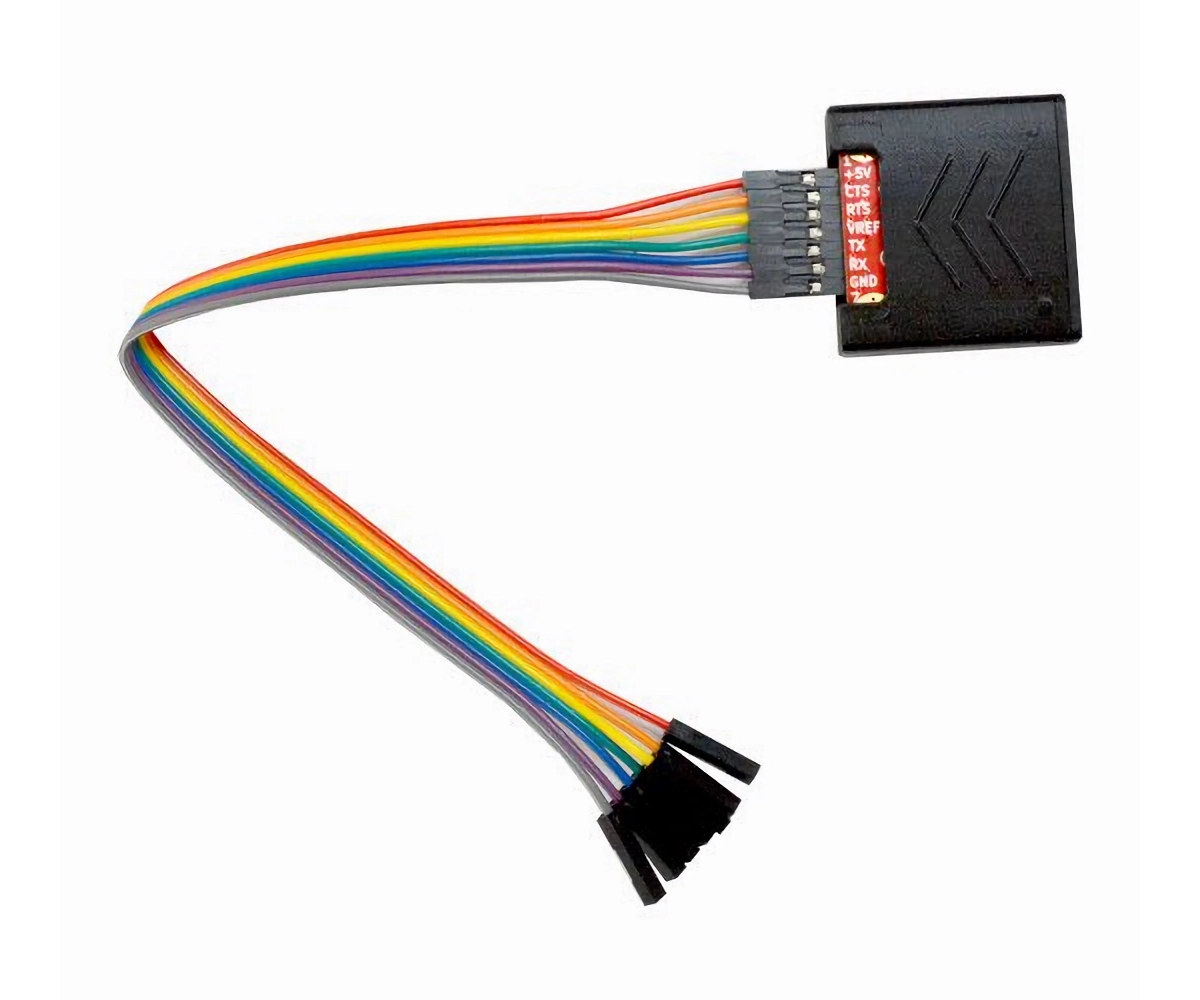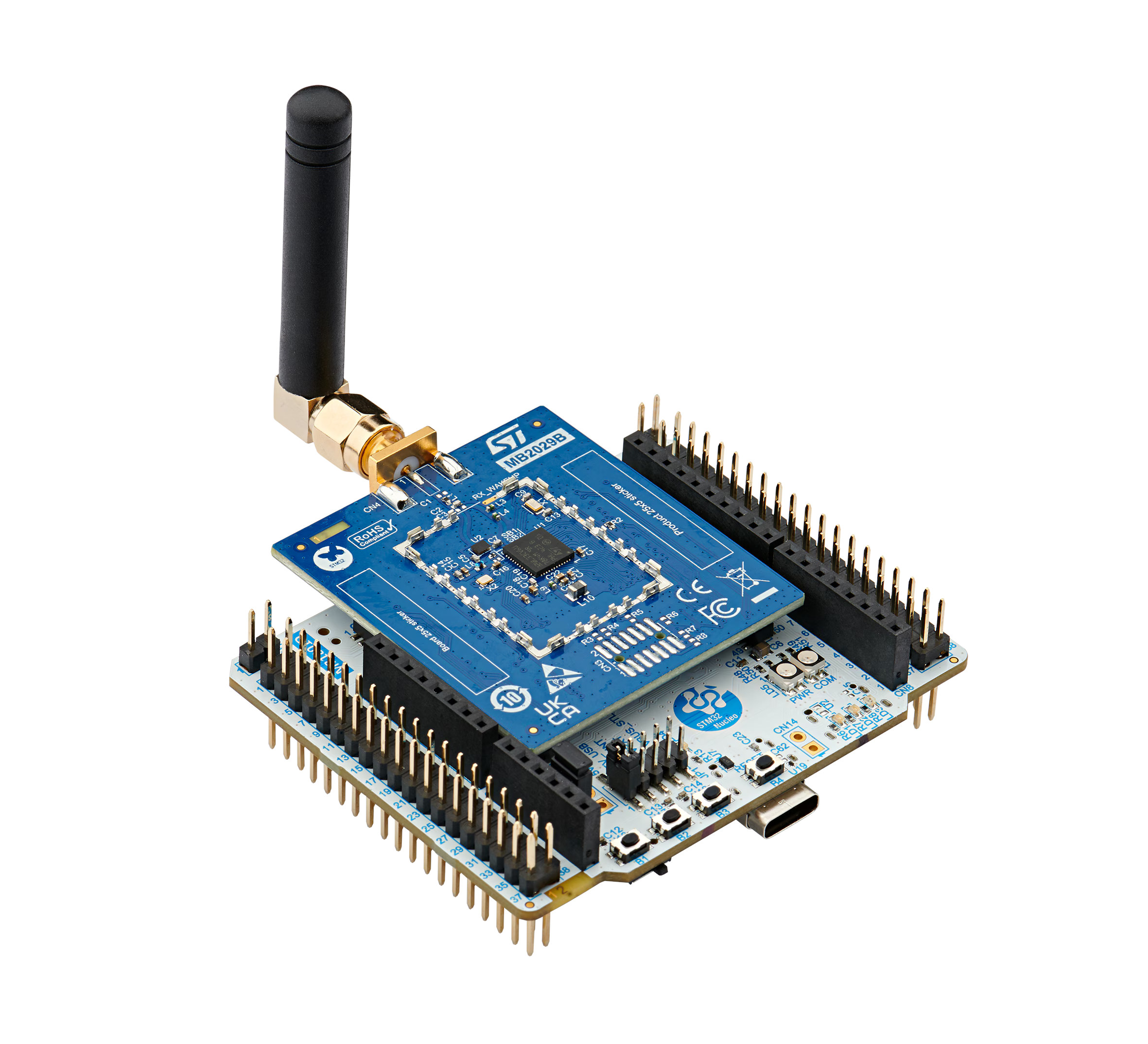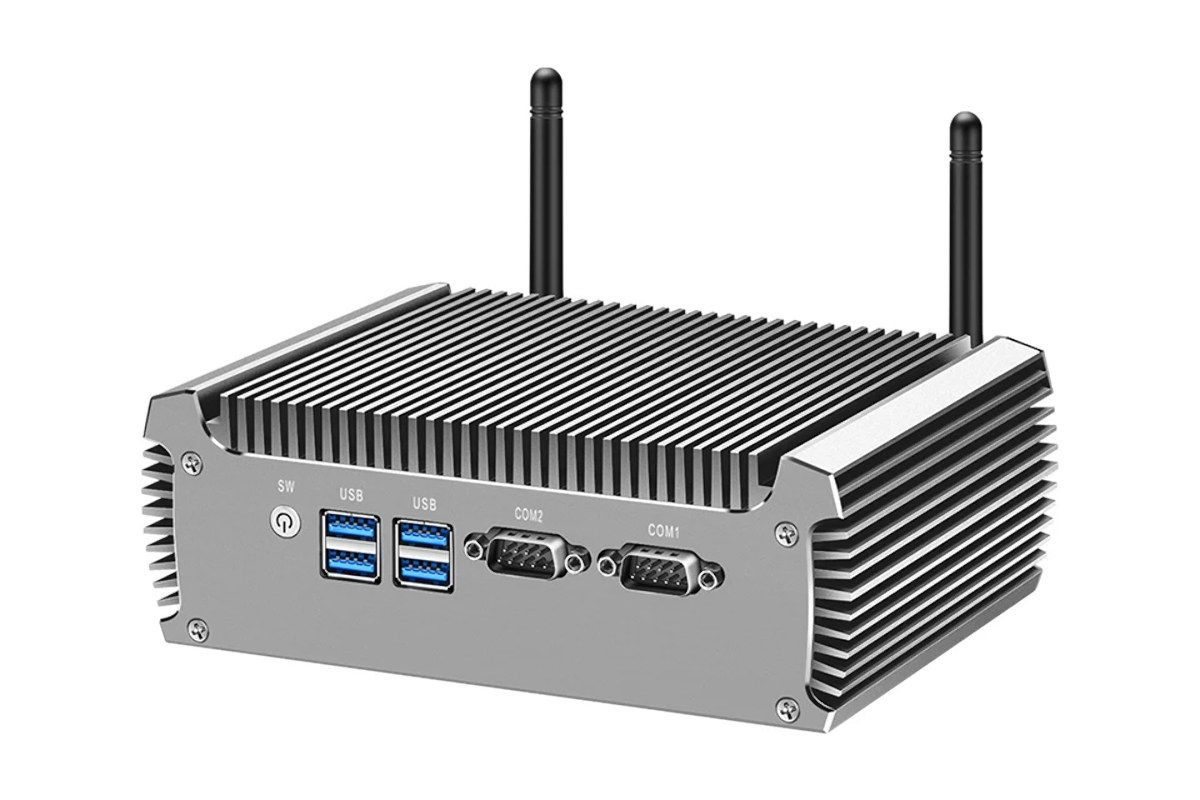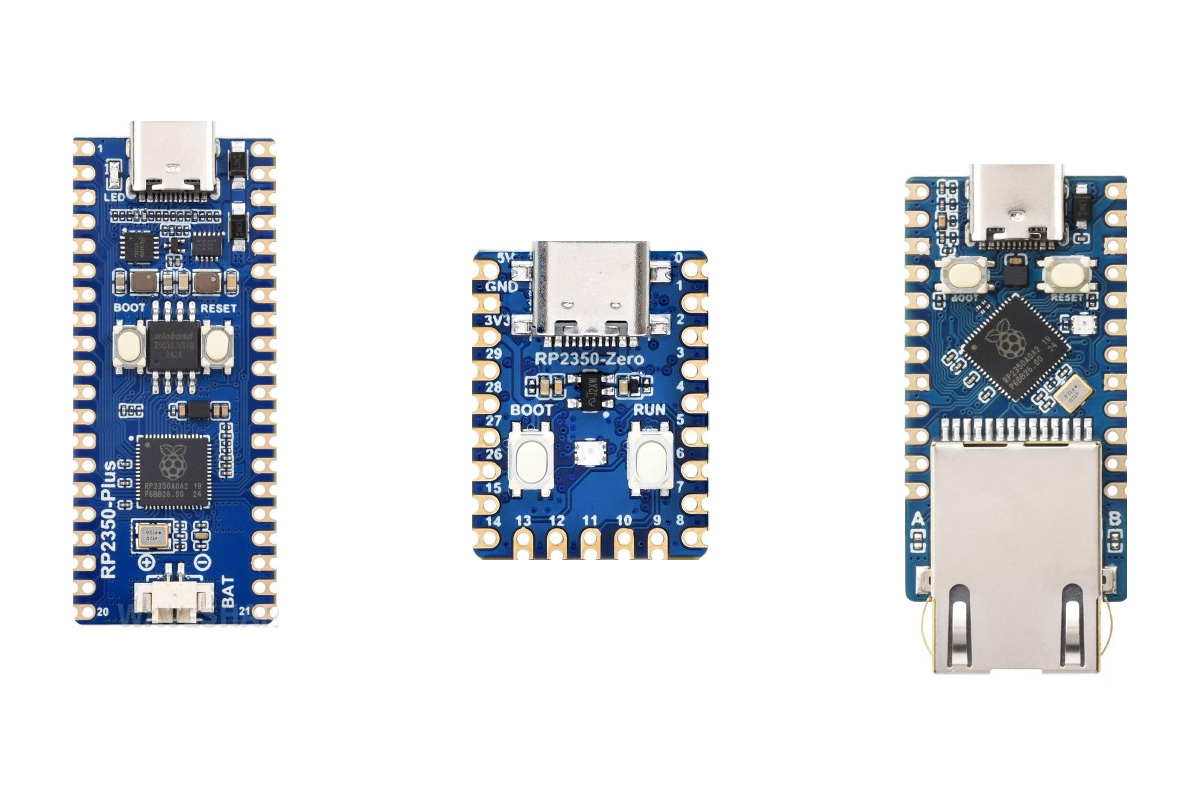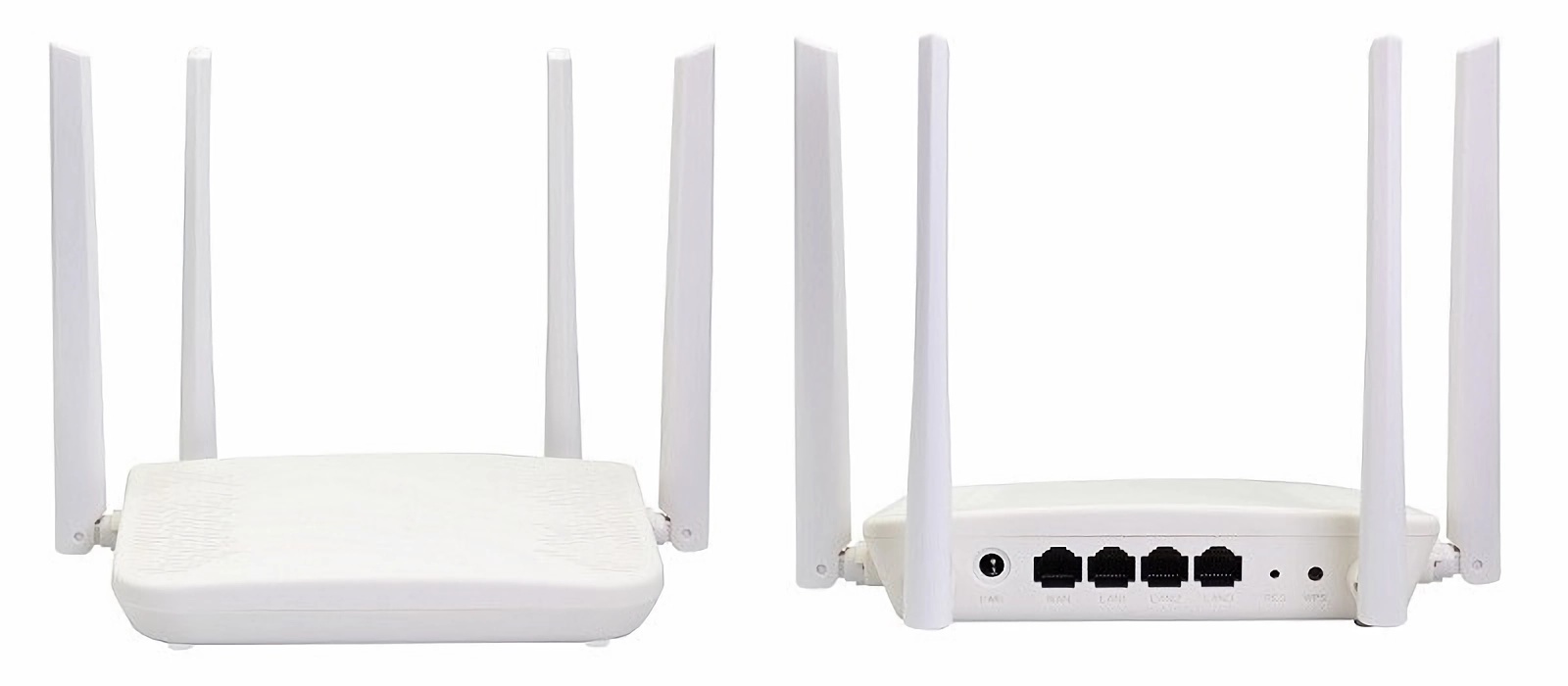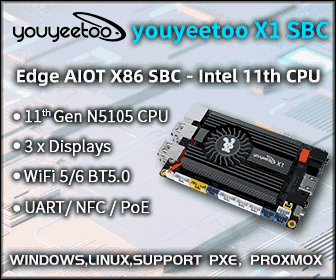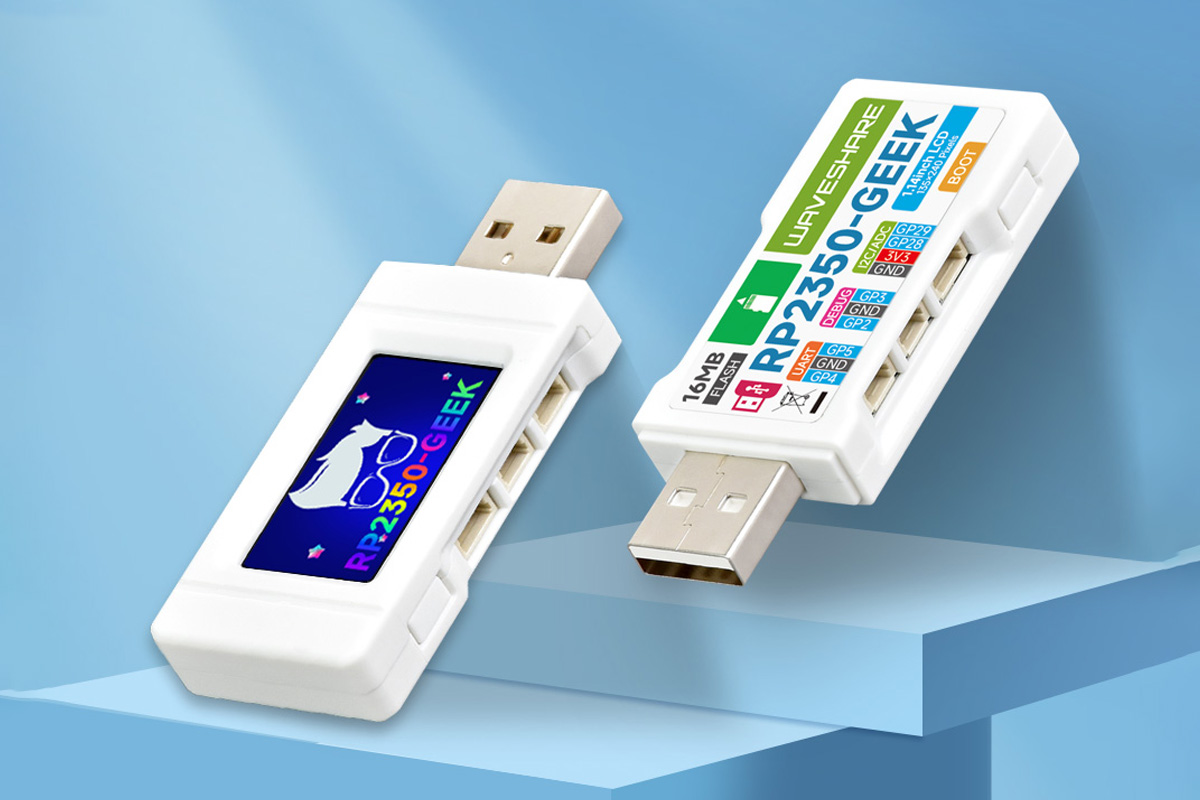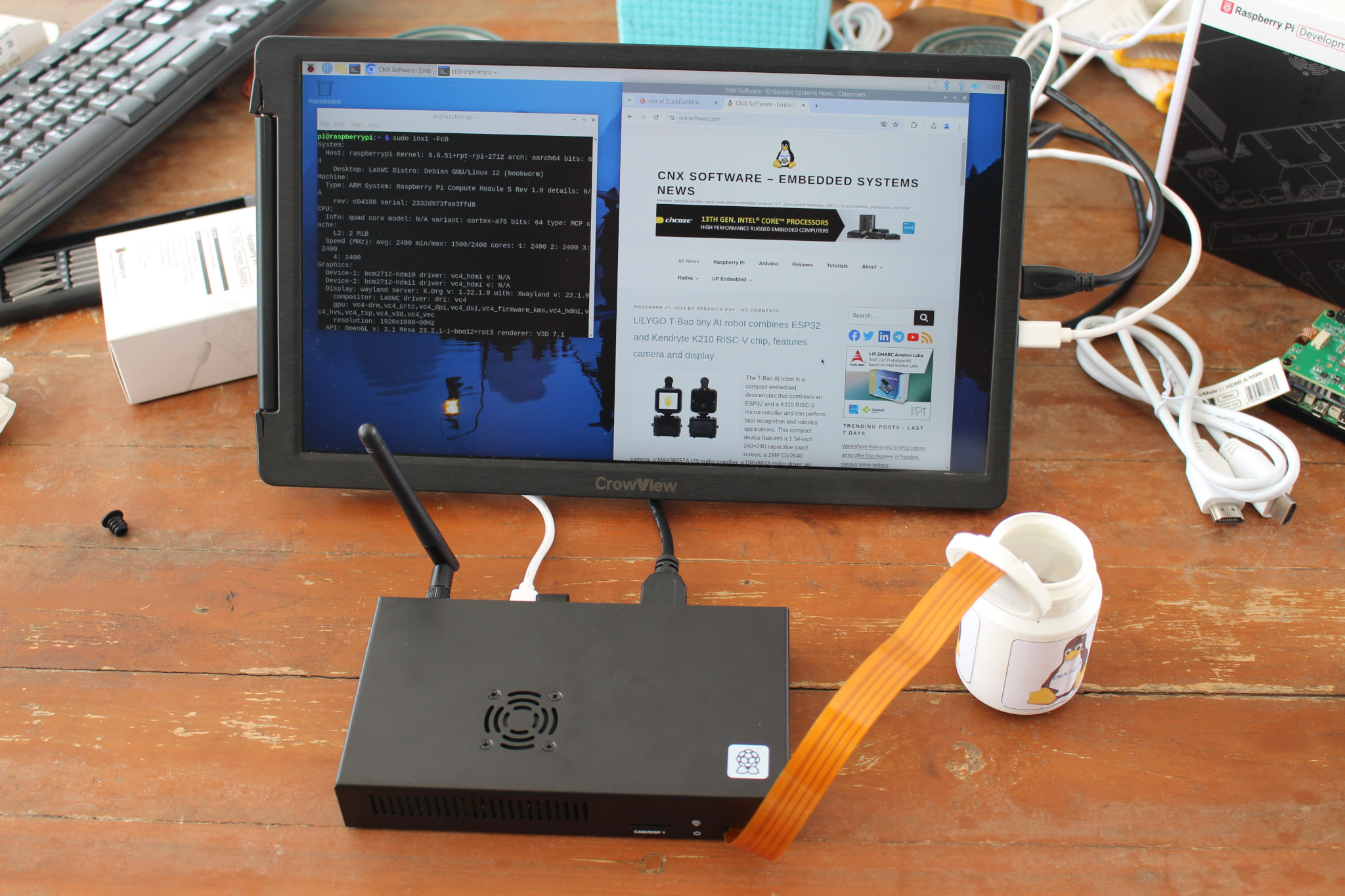There are already many USB-to-TLL debug boards on the market, but Olimex USB-SERIAL-L open-source hardware USB-to-serial board is more advanced than most with not only Tx/Rx pins, but also CTS/RTS pins, support for up to 3 Mbps speeds, and an adjustable voltage from 0.65V to 5.5V to cater to a wide range of boards. Olimex USB-SERIAL-L specifications: USB-to-serial chip – Silicon Labs CP2102N Seven signal lines – +5V, GND, CTS, RTS, TX, RX, Vref Baud rate from 50bps up to 3Mbps Output buffers with adjustable levels from 0.65 up to 5.5V USB – USB Type-C port for power and connect to host Misc – Power, Tx, and Rx status LEDs Power Supply Input – 5V via USB-C port Output – +5V to the target Dimensions – 35 x 35 x 8 mm (Custom 3D printed plastic box) Seven 200 mm long cables The Vref signal is used to adjust the […]
STMicro NUCLEO-WL33CC1 and NUCLEO-WL33CC2 boards features STM32WL33 Cortex-M0+ Sub-GHz wireless MCU
STMicro unveiled the STM32WL3 sub-GHz wireless MCU family last year and has now announced the general availability of the STM32WL33 Arm Cortex-M0+ microcontroller, along with two development boards namely the NUCLEO-WL33CC1 and NUCLEO-WL33CC2 for battery-powered smart meters and smart building and industrial monitoring solutions using wireless M-Bus, Sigfox, WiSun, LoWPAN or Mioty LPWAN protocols among others. The NUCLEO-WL33CC1 and NUCLEO-WL33CC2 development boards look the same, but the former supports 826-958 MHz high-band frequencies, while the latter handles 413-479 MHz low-band frequencies. STMicro NUCLEO-WL33CC1/2 specifications: SoC – STMicro STM32WL33CCV6 MCU Core – Arm Cortex-M0+ up to 64 MHz Memory – 32KB SRAM with full retention Storage 256KB flash 1 KB OTP flash (user data) Sub-GHz Wireless 413-479 MHz or 826-958 MHz frequency bands with OOK, ASK, 2(G)FSK, 4(G)FSK, D‑BPSK, and DSSS modulations Compatible with proprietary and standardized wireless protocols such as WM-Bus, Sigfox, Mioty, KNX-RF, and IEEE 802.15.4g Low-power autonomous wake-up […]
Barebone Intel Celeron 2955U or Pentium 3805U fanless industrial mini PC goes for $60 (Promo)
If you’re in need of a low-end, cheap x86 platform you’re in luck since XCY is selling the X46G industrial fanless mini PC powered by an Intel Celeron 2955U Haswell processor or a Pentium 3805U Broadwell CPU for just about $60 as a barebone system, or around $74 with 4GB of RAM, a 64GB SSD, and a WiFi module as part of a Black Friday 2024’s promotion. It’s even cheaper in some other shops, as we’ll see below. Both CPUs have been discontinued since 2021, and nobody should use those in a desktop system unless you are of the very patient type. However, if you want to run some lightweight Windows or Linux application(s), make use of RS232 ports for industrial control, set up a Full HD HTPC, configure a dual GbE server, or need to run FreeDOS or similar x86-only operating systems, those ultra-cheap Intel mini PCs might prove […]
Waveshare launches three RP2350 USB-C development boards with castellated design, battery support, built-in Ethernet port
Waveshare has announced four new USB-C and USB-A development boards based on the Raspberry Pi RP2350 MCU: the Waveshare RP2350-Plus dev board, the Waveshare RP2350-Zero Mini dev board, the Waveshare RP2350-ETH Mini dev board, and the Waveshare RP2350-GEEK USB dev board. The RP2350-Plus is a low-cost, high-performance Pico-like development board with the RP2350 MCU, various I/O, battery support, USB Type-C, and compatibility with Raspberry Pi Pico modules. The RP2350-Zero Mini is another compact dev board with castellated pins, 29 GPIOs, USB Type-C, PIO, and versatile peripheral support, ideal for IoT, robotics, and embedded systems. The RP2350-ETH Mini dev board has Ethernet support and various GPIO functionalities, making it ideal for IoT development. Like any other RP2350 board, the Waveshare RP2350 boards support C/C++ and MicroPython SDKs with drag-and-drop firmware flashing via USB mass storage. Waveshare RP2350-Plus development board The Waveshare RP2350-Plus is a low-cost development board that comes in a […]
$16 Banana Pi BPI-WiFi5 router is powered by Siflower SF19A28 dual-core MIPS SoC
Banana Pi BPI-WiFi5 is a low-cost WiFi 5 AC1200 router with four gigabit Ethernet ports powered by a 1.2 GHz Siflower SF19A28 dual-core MIPS SoC coupled with 64MB DDR2 and an 8MB flash. It’s not the first low-cost router from the company, as the Banana Pi BPI-WiFi6 Mini was introduced this summer for $30 with Triductor TR6560 SoC, and with the Banana Pi BPI-WiFi5, they’ve now introduced a lower-end WiFi 5 router going for just about $16 plus shipping on AliExpress or $29.99 on Amazon. Banana Pi BPI-WiFi5 specifications: SoC – Siflower SF19A2890S2 dual-core MIPS processor @ 1.2GHz System Memory – 64MB DDR2 RAM Storage – 8MB flash Networking Switch – Airoha AN8855R Gigabit Ethernet switch 1x Gigabit Ethernet WAN port 3x Gigabit Ethernet LAN ports Wireless 2.4 GHz WiFi 2×2 MIMO up to 300 Mbps 5 GHz WiFi 2×2 MIMO up to 866.7 Mbps Frequency bands 2.4GHz – 2.4GHz […]
ESP32-based YULC USB-C LED Controller features dual power inputs, supports WLED and ESPHome firmware
The YULC (Yes, a USB-C LED Controller) board is a compact, ESP32-S3-powered LED controller with USB-C and DC jack power inputs. It is a fully featured board that can easily replace a rat’s nest of wires and save space and time. This ESP32 LED controller features a built-in buck regulator that converts input power from the USB-C port or barrel jack to the voltage needed for the LED strips. The YULC provides two separate LED channels with a level shifter each to ensure clean and powerful data output, removing the need for a sacrificial pixel or external level shifter. Each channel also has a power MOSFET that can turn off the channels individually and dim simple LED strips via PWM. AAElectronics, the maker, has previously released an IR remote—the Home Assistant-compatible ESP 360 Remote—which we covered at the time. Similar products include the SMLIGHT A1-SLWF-03, DFRobot’s EDGE102-DMX512, and the PixelBlaze […]
Waveshare RP2350-GEEK USB development board doubles as a debugger for Raspberry Pi and other Arm boards
Waveshare has recently launched the RP2350-GEEK USB development board which can also be used as a debugger for Raspberry Pi boards and other Arm-based targets. Built around the Raspberry Pi RP2350 MCU this development board/debugger features a 1.14-inch 65K color IPS LCD, a USB Type-A interface, a microSD card slot supporting SDIO and SPI communication, 16MB NOR-Flash, and multiple interfaces, including 3-pin SWD, USB to UART, and I2C ports. The board is compatible with standard CMSIS-DAP debugging tools like OpenOCD, which attaches to Raspberry Pi’s 3-pin debug connector for debugging. It also features open-source firmware for easy upgrades. Housed in a plastic case, the development board looks like a USB drive and is suitable for debugging, testing, and firmware development in IoT, embedded systems, and educational projects. Waveshare RP2350-GEEK Raspberry Pi debugger specifications Microcontroller – Raspberry Pi RP2350A MCU CPU – Dual-core Arm Cortex-M33 processor @ 150MHz Memory – 520KB internal RAM […]
A first look at the Raspberry Pi Development Kit for CM5
Raspberry Pi has just launched the Compute Module 5 (CM5) and the company sent me a “Raspberry Pi Development Kit for CM5” for review and to play around with the new Broadcom BCM2712 system-on-module succeeding the Raspberry Pi Compute Module 4 (CM4) introduced in 2020. Today, I’ll have a first look at the development kit checking out the hardware, connecting accessories, booting it up to Raspberry Pi OS, and collecting some basic system information. I’ll do a more in-depth review in a few weeks. Unboxing of the Raspberry Pi Development Kit for CM5 I received the kit in a package reading “Raspberry Pi Development Kit” and “For Raspberry Pi CM5”. That’s a good start… The bottom side lists the package’s content which I will check out shortly, and a link to the documentation. Let’s see what we have with the Raspberry Pi Development Kit: a Raspberry Pi IO Case, a […]


